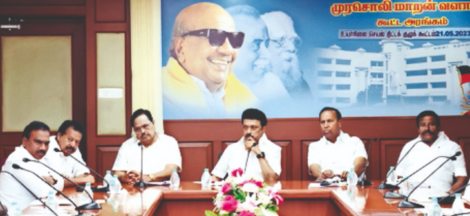By K R Sudhaman
India’s retail sector, cruising towards $1 trillion by 2020 growing annually at 20 per cent, is in for exciting times as consumers want “clean and swanky” stores, even as ecommerce and kirana stores grow side by side as they too have their utility and share of the pie.
“India is in a bright spot… Very soon fancy stores will be coming into India…. Eventually shopping will become very clean, very luxurious and retailers will make their shops destination oriented,” said Dunnhumby India head Anthony Kilili, an expert in predictive analytics.
Kilili leads more than 350 data scientists in India at Dunnhumby’s Gurgram office, which is global R&D hub for the UK-based company. This global customer data science company helps retailers through analysis of data so as to understand and know the behavioral pattern of retail customers. Dunnhumby’s job is to look at the pattern from data of 700 million customers from 27 countries including United States and Europe.
Dunnhumby global CEO Guillaume Bacuvier was recently in India and had an interaction with major Indian retailers in Mumbai to explore and promote data analytics in the Indian retail sector. The Indian R&D centre is growing at 25 per cent annually.
According to Bacuvier, India has reached the required maturity and it is right time to harness the upcoming opportunities and partner with potential clients. India is already among the top 10 big data analytics markets in the world. Dunnhumby is investing at the India centre with sustained hiring and plans to add 10 per cent more work force by the end of this financial year to meet the growing business demand.
Kilili said lately the global trend is ecommerce, which is picking up rapidly in India as well. Big retailers are globally reducing stocks. In United States, big retailers are shrinking because of ecommerce. It is happening in Europe as well. Some of the malls are becoming express type of shops.
This is because there is more choice in e commerce. Besides it is more convenient as all you need is a mobile phone, he said.
However logistics and distribution are the biggest problems for ecommerce, he said adding many of the big retailers are in e commerce as well. The trend globally is that Big retailers are in all formats like express stores (kirana stores), large retail as well as ecommerce. A blend makes sense. There will be a balance. Even within retail stores there are restaurants so that customers combine shopping with leisure.
Elaborating on the retail pattern in India, Kilili said there is huge potential for analytics. There is huge data available in Kirana stores to analyse customers’ behaviour. It is a gold mine and it has not yet been tapped. Some will have to start it sooner than later.
He said in India kirana stores will coexist with big retail stores. Ecommerce too will grow side by side. Globally too “we have retailers spread out that way. Small stores like mom and pop stores coexist with big stores and ecommerce.”
Even global multi-brand retail chain like Tesco now have small stores, middle ones and large ones spread across England and Europe. That is the trend and the concept of having only very large stores is changing. Dunnhumby is a customer science company, fully owned by Tesco, a leading brand in the UK retail market today.
Both Ecommerce and big retailers work on thin margins. Huge volumes get them money, he said adding it’s the middle men between the producers and the retailers who make huge margins particularly on perishables. In Ecommerce, stocking is a major challenge.
Return of goods in ecommerce is an issue. Sometimes it is as high as 5-6 per cent and it translates into millions of dollars as ecommerce works on volumes. Anything 1-2 per cent of return is a problem for ecommerce.
Kilili said this is where data analytics helps. Dunnhumby provides solution to its clients. The data analytics also helps in resurrecting brands as well as recapturing the lost markets by predicting behaviour of customers.
Asked if the huge money spent on advertisement is really helpful in promoting sales, Kilili said there is a famous quote: “I know half of advertisement is wasted but I do not know which half.”
This is the dilemma. Everybody knows some money is wasted and at times a lot of it wasted on advertisement. But if one stops advertising, it does affect business. Figuring out, which of the advertisement is wasted is virtually next to impossible. Hence one had to budget a lot of money for advertisement which adds to cost. In fact a lot of analytics go into advertisement and if one does not spend money on advertisement there is every possibility of market share getting impacted, Kilili said. (IPA Service)
The post Retail Poised For Exciting Times; Consumers Want More Swanky Stores appeared first on Newspack by India Press Agency.


